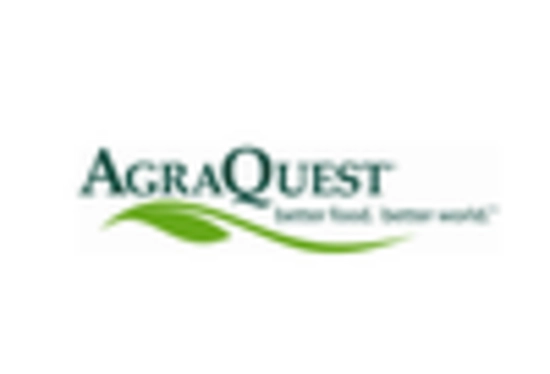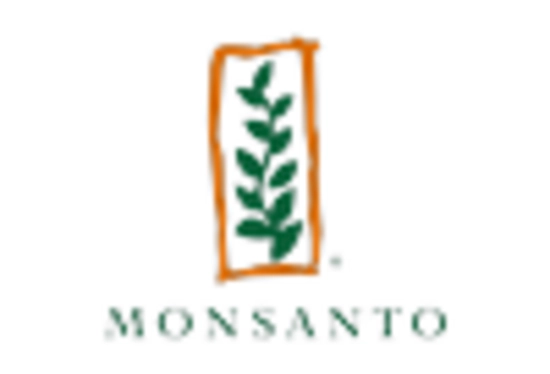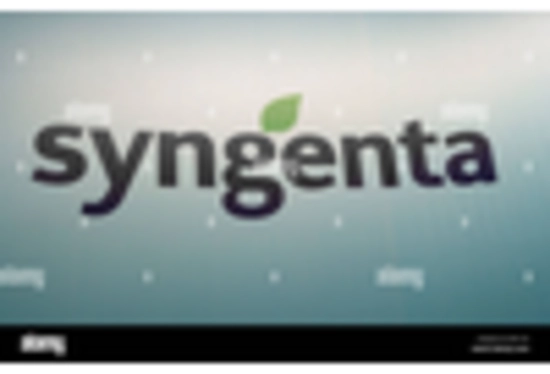Innovations in Crop Protection
Innovations in crop protection are propelling the Agricultural Nanotechnology Market forward. Traditional pesticides often pose risks to human health and the environment, leading to a growing demand for safer alternatives. Nanotechnology enables the development of targeted delivery systems for pesticides, reducing the quantity needed while enhancing effectiveness. For example, nano-encapsulated pesticides can release active ingredients in a controlled manner, minimizing environmental impact. The market for nanotechnology-based crop protection solutions is projected to grow significantly, with estimates suggesting a compound annual growth rate of over 15% in the coming years. This trend underscores the potential of nanotechnology to revolutionize pest management.
Rising Demand for Food Security
The Agricultural Nanotechnology Market is experiencing a surge in demand driven by the increasing need for food security. As the global population continues to grow, the pressure on agricultural systems intensifies. Nanotechnology offers innovative solutions to enhance crop yields and improve food quality. For instance, the use of nanosensors can monitor soil health and crop conditions in real-time, allowing for timely interventions. According to recent estimates, the agricultural sector must increase food production by approximately 70% by 2050 to meet the needs of the burgeoning population. This scenario positions agricultural nanotechnology as a pivotal player in addressing food scarcity challenges.
Advancements in Fertilizer Efficiency
Advancements in fertilizer efficiency are a key driver in the Agricultural Nanotechnology Market. Conventional fertilizers often lead to nutrient runoff, causing environmental degradation. Nanotechnology offers a solution by enabling the development of slow-release fertilizers that enhance nutrient uptake by plants. These fertilizers can be engineered at the nanoscale to ensure that nutrients are released in sync with plant growth needs. Research indicates that the use of nanofertilizers can increase crop yields by up to 30% while reducing the overall quantity of fertilizers applied. This efficiency not only benefits farmers economically but also contributes to sustainable agricultural practices.
Integration of Smart Farming Technologies
The integration of smart farming technologies is transforming the Agricultural Nanotechnology Market. The advent of the Internet of Things (IoT) and precision agriculture tools allows for the collection and analysis of vast amounts of data. Nanotechnology plays a crucial role in this integration by providing advanced sensors and monitoring systems that can assess soil conditions, moisture levels, and crop health. These technologies enable farmers to make informed decisions, optimizing resource use and improving productivity. The market for smart farming solutions is expected to expand rapidly, with projections indicating a growth rate of over 20% annually, highlighting the synergy between nanotechnology and smart agriculture.
Regulatory Support for Nanotechnology Applications
Regulatory support for nanotechnology applications is emerging as a significant driver in the Agricultural Nanotechnology Market. Governments and regulatory bodies are increasingly recognizing the potential benefits of nanotechnology in agriculture. Initiatives aimed at promoting research and development in this field are gaining traction, with funding opportunities and policy frameworks being established to facilitate innovation. This supportive environment encourages investment in nanotechnology solutions, fostering collaboration between academia and industry. As regulatory frameworks evolve to accommodate nanotechnology, the market is likely to witness accelerated growth, with stakeholders eager to explore the advantages of these advanced agricultural practices.


















Leave a Comment